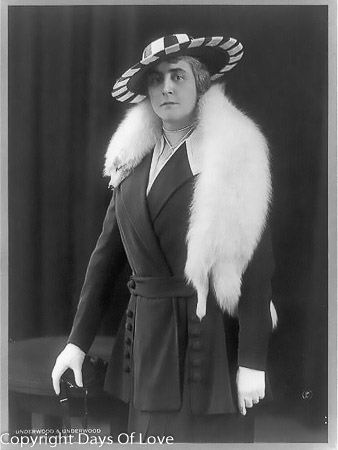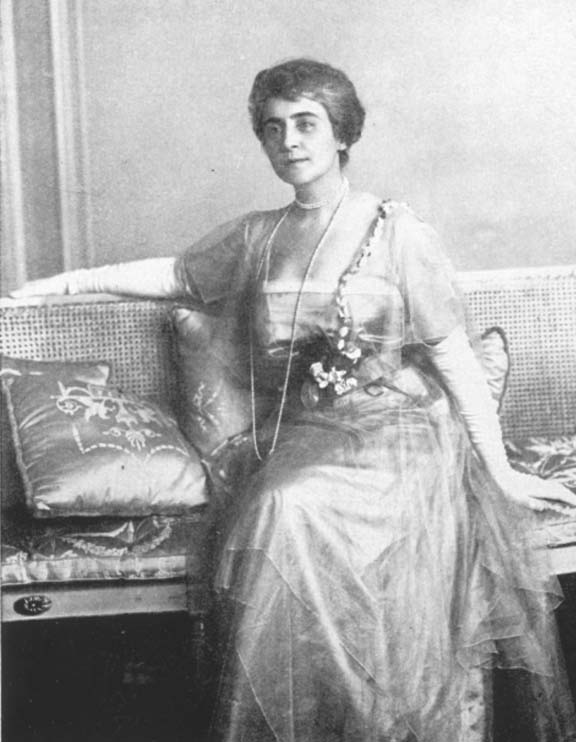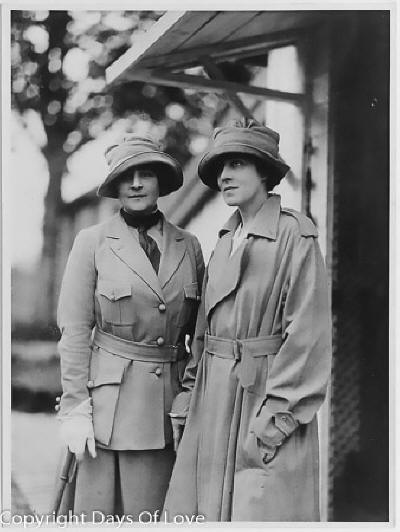

Partner Anne Murray Dike
Queer Places:
Colony Club, 120 Madison Ave, New York, NY 10016, USA
Colony Club, 564 Park Ave, New York, NY 10065, Stati Uniti
The Morgan Library & Museum, 225 Madison Ave, New York, NY 10016, Stati Uniti
3 Sutton Pl, New York, NY 10022, Stati Uniti
43 Rue de Courcelles, 75008 Paris, Francia
Château de Blérancourt, 33 Place du Général Leclerc, 02300 Blérancourt, Francia
Cedar Hill Cemetery, 453 Fairfield Ave, Hartford, CT 06114, Stati Uniti
 Anne
Tracy Morgan (July 25, 1873 – January 29, 1952) was an American philanthropist
who provided relief efforts in aid to France during and after World War I and
World War II.[2]
Morgan was educated privately, traveled frequently and grew up amongst the
wealth her father had amassed. She was awarded a medal from the National
Institute of Social Science in 1915, the same year she published the story
The American Girl. In 1932 she became the first American woman appointed a
commander of the French Legion of Honor.
Anne
Tracy Morgan (July 25, 1873 – January 29, 1952) was an American philanthropist
who provided relief efforts in aid to France during and after World War I and
World War II.[2]
Morgan was educated privately, traveled frequently and grew up amongst the
wealth her father had amassed. She was awarded a medal from the National
Institute of Social Science in 1915, the same year she published the story
The American Girl. In 1932 she became the first American woman appointed a
commander of the French Legion of Honor.
She was born on July 25, 1873 at "Cragston" her family's country estate on the Hudson River at Highland Falls, New York, the youngest of four siblings born to John Pierpont Morgan and Frances Louisa Tracy Morgan.
In 1903, she became part owner of the Villa Trianon near Versailles, France, along with decorator and socialite Elsie De Wolfe and theatrical/literary agent Elisabeth Marbury. Morgan was instrumental in assisting De Wolfe, her close friend, in pioneering a career in interior decoration. The three women, known as "The Versailles Triumvirate," hosted a salon in France and, in 1903, along with Anne Harriman Vanderbilt, helped organize the Colony Club, the first women's social club in New York City and, later, helped found the exclusive neighborhood of Sutton Place along Manhattan's East River. Reading the diaries Morgan began keeping in 1903, Alfred Allan Lewis argues that she fell in love with Marbury but that Marbury, while flattered by and welcoming of the younger woman's ardor, remained primarily devoted to de Wolfe. She became a role model for Morgan's own career as an activist and for her subsequent romantic and socially influential partnership with Anne Vanderbilt.
Around 1910, she became a union activist. [1] Anne Morgan actively supported striking female workers in New York's garment industry. She and other wealthy female members of her social circle stood in picket lines with striking shirtwaist workers and contributed financially to their cause.[3] These strikes in New York's garment industry immediately preceded the Triangle Shirtwaist Fire.


Colony Club, 120 Madison Ave
The Morgan Library & Museum, 225 Madison Ave
Second Colony Club House, NYC
3 Sutton Pl
In 1912, she started the Society for the Prevention of Useless Gift Giving (SPUG) with Eleanor Robson Belmont.[4]
n 1916, Morgan and De Wolfe largely funded Cole Porter's first Broadway musical, See America First, produced by Marbury.[5]
From 1917 to 1921, Morgan took residence near the French front, not far from both Soissons and the "Chemin des Dames" at Blérancourt, and ran a formidable help organisation, The American Friends of France (it employed several hundred people at a time, volunteers from abroad and locally recruited staff), financed partly out of her own deep pockets, partly with the help of an active network in the States.[6] The AFF was active in succoring noncombatants, organizing a health service that still exists in Soissons, a workshop to provide basic furniture to bombed-out families, a holiday camp for children, and a mobile library that was taken over by the library in Soissons, and so on. She returned in 1939 to help the Soissons evacuees.
Anne Murray Dike, a doctor, joined Anne Morgan in France. The estate of Blérancourt was transformed into a museum and inaugurated in 1930, one year after the death of Anne Murray Dike. The two were rewarded for their services, and they later developed a romantic relationship.[7] Dike is buried in the village cemetery at Blérancourt.[8]
Morgan's friendships included many socialites and celebrities of her day. Her connection to individuals such as Cole Porter, as mentioned above, allowed her to compile a cookbook for charity. Titled the Spécialités de la Maison and published in 1940 to benefit the AFF, it offered recipes by cultural icons such as Pearl S. Buck, Salvador Dalí, and Katharine Hepburn.[9]
She died on January 29, 1952 in Mount Kisco, New York.[2]
A four-story townhouse built in the Sutton Place neighborhood of Manhattan's Upper East Side in New York City for Anne Morgan in 1921 was donated as a gift to the United Nations in 1972. It is now the official residence of the United Nations Secretary-General.[10]
Morgan is also connected with Lillie P. Bliss and Elizabeth Milbank Anderson.
My published books: